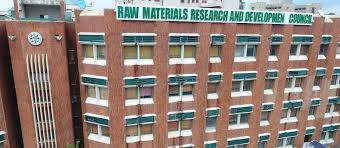The Raw Materials Research and Development Council (RMRDC) is considering the establishment of Raw Materials Testing and Analysis Centres across Nigeria’s six geopolitical zones.
The move is to address the country’s dependence on foreign laboratories for product testing and certification.
Director-General of RMRDC, Professor Nnanyelugo Ike-Muonso, revealed this during the signing of a Memorandum of Agreement (MoA) between RMRDC and African University of Science and Technology (AUST) in Abuja.
He said the initiative, which begins with a flagship testing and analysis centre within the campus of AUST paims to strengthen Nigeria’s industrial base by providing world-class facilities for testing agricultural and mineral raw materials locally.
Ike-Muonso revealed that the partnership with AUST was born out of the council’s commitment to closing identified gaps in raw materials testing and analysis, which have long limited Nigeria’s industrial growth.
“With the Abuja testing and analysis centre, industries will no longer need to take their raw materials abroad for quality verification.
“Our goal is to make Nigeria self-sufficient in raw materials testing and to boost the nation’s capacity for innovation, manufacturing and export,” he said.
He disclosed that the Abuja facility would serve as a pilot project for the eventual establishment of similar centres in the six geopolitical zones, ensuring accessibility for industries across the country.
According to Ike-Muonso, the centre will also support postgraduate training and research at AUST in specialised fields such as materials science, industrial chemistry, mineral processing, and sustainable manufacturing.
“Our vision is to build a network of testing and analysis centres that will make Nigeria the hub for raw materials research, innovation, and value addition in Africa,” he said.
President of AUST, Prof. Peter Onwualu, described the collaboration as a strategic step toward industrial self-reliance and sustainable development.
He said the partnership is anchored on the “triple helix” model, which brings together government, academia, and industry to drive innovation and value addition in the raw materials sector.
According to him, the new facility would serve as a hub for testing, research, and capacity building for small and medium enterprises (SMEs), enabling them to meet global quality standards and enhance competitiveness.






